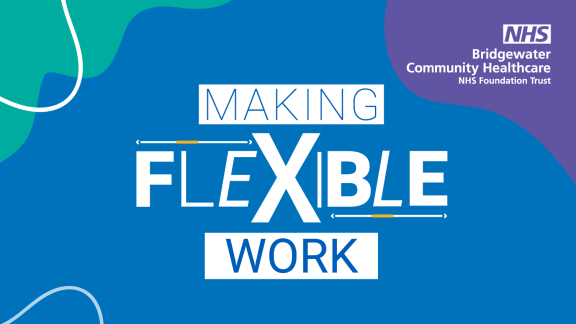Improving nurses' work-life balance: Birmingham Women's and Children's NHS Foundation Trust

Birmingham Women’s and Children’s NHS Foundation Trust (BWCNHSFT) has recently undertaken a shift in their flexible working offer for staff. As part of this they took part in a pilot initiative which aimed to improve nurse’s work-life balance through the implementation of a team-based rostering system.
Overview
The trust began its work in 2017, with the ultimate goal to improve the retention of nurses and fulfil needs outlined by them for flexible working.
As part of the initiative, significant improvements were made in three core areas:
- meeting nurses' work-life preferences
- increasing nurses' input into rosters
- improving collective responsibility for creating the roster.
Key benefits and outcomes
- There was an overall improvement in three key areas: establishing and achieving nurses’ work-life preferences; increasing nurses’ participation into the rosters; and sharing the responsibility for creating the roster.
- A noticeable culture shift happened within the pilot wards making it acceptable to want or ask for flexibility for any reason.
What the organisation faced
The trust had already started looking at improving the flexible working offer for staff. A particular focus was the high turnover rate for band 5 nurses and midwives. Across BWCNHSFT this turnover rate was typically around 12-14 per cent.
Following reports such as Health Education England’s Mind the Gap and from the work undertaken locally, the trust acknowledged that there are generational issues that require consideration in order to appropriately support individuals as they begin their professional careers. For the first time in history, four different generations are working together in the same employment environment with differences in values, expectations, perceptions, and motivations. These are all highly relevant in terms of staff engagement.
The Mind the Gap report shows that early career nurses and midwives have a range of needs and expectations in the workplace, including:
- clear, structured career development and progression pathways
- team-spiritedness with care and support from leaders and teams
- to be engaged in meaningful work to make a difference
- flexibility to achieve work-life balance.
What the organisation did
Based on the findings that an important need for early career nurses was flexibility to achieve work-life balance, the trust secured funding from the Burdett Trust for a two-year action research project with Timewise to look at team-based rostering on in-patient wards. The pilot initiative aimed to increase nurses’ input into their working patterns and improve their work-life balance, with the ultimate goal being to aid the retention of nurses in the NHS.
The overall project focused on three trusts (Birmingham Women’s and Children’s NHS Foundation Trust, Nottingham University Hospitals NHS Foundation Trust and University Hospital Southampton NHS Foundation Trust) working with 240 nurses in seven wards. The aim was to develop a team-based approach to develop the roster and manage shifts and working patterns by using staff’s work-life balance needs and preferences.
The process
- The trust selected and briefed the pilot wards.
- The lead team was established in each of the ward’s bands by the ward managers.
- Lead team members were trained in how to collect nurses’ work-life preferences, and how to produce the roster.
- Members of staff from each band gathered the preferences in one-to-one discussions.
- Lead team members produced the roster.
- It was then finalised by the ward manager, who made any changes necessary before final approval.
Results and benefits
Significant improvements were made in three areas: meeting nurses’ work-life preferences; increasing nurses’ input into rosters; and improving collective responsibility for creating the roster.
Pre and post surveys of nurse participants across all three trusts showed that the proportion of nurses who felt that their work-life preferences were being met went up from 39 per cent to 51 per cent. The number of nurses who said that the amount of input they have into rosters went up from 14 per cent to 26 per cent. Finally, the proportion reporting a strong sense of collective responsibility improved from 16 per cent to 36 per cent.
One real positive to come out of the pilot at BWCNHSFT was that it resulted in a culture shift within the pilot wards and it is now deemed acceptable to want or ask for flexibility for any reason. Before the pilot, childcare responsibilities topped the hierarchy of needs and people felt hesitant about asking to work flexibly if they didn’t have caring responsibilities for children.
There is some qualitative feedback which provides an insight into the success of the pilot:
- “The three wards at BWCNHSFT that initially piloted team-based rostering are continuing to roster in this way, as they feel it has improved levels of staff engagement and created a sense of fairness and equity across nursing teams.”
- “There are some personal examples and success stories in individual nurses who have managed to increase their contracted hours as they now have assurance in being able to work hours that fit their personal circumstances.”
- “There are instances of bank nursing staff (who had chosen to work through the bank to meet their needs for flexible working) taking up substantive posts because they felt confident that the new mechanism for rostering could accommodate their needs.”
In addition to the Timewise pilot, the trust has also developed a guide and managers toolkit to flexible working. This sits alongside the trust’s more formal flexible working policy, but is deemed to be more user-friendly and easier to access.
The toolkit includes top tips for staff and managers, outlines the range of flexible working options available to staff and is intended to make people feel empowered to embrace a culture of flexibility. The toolkit is applicable to all staff groups (not just nurses) and features a range of stories from staff about how the trust is supporting them to work flexibly.
Overcoming obstacles
The pilot wasn’t without its challenges and the process was particularly resource intensive when developing the necessary rostering expertise within the team. Given that payment for unsocial hours is also processed from the rostering system, it was particularly important to get this process right.
Initially the rostering process took much longer than usual due to the negotiations that needed to take place to understand staff needs and desires in terms of their preferred work-life balance, although there were higher levels of satisfaction in the end result across the team because of this time spent.
Overall, the benefits of the pilot and what the trust has achieved outweigh the costs and time spent in implementing this approach.
What next
Now the pilot is complete, the team is trying to spread the learning across the trust more widely and secure buy-in for a broader roll out. This is currently taking the form of delivering presentations to board members and senior nursing colleagues and at trust briefings. The team is also interested in exploring a number of different options to promote better flexibility across the nursing workforce, in recognition that there’s no one size fits all.
The trust also recognises a need to consider how implementing better flexible working practices for the nursing workforce could be adopted by other members of multidisciplinary teams such as allied health professionals.
Takeaway tips
- Spend a lot of time at the start on staff briefings, especially to explain what team-based rostering is, and the difference between preferences and rights, and how that works in practice.
- Make sure the team leaders have training in how to produce an effective roster before starting and ensure they have the full access required to the electronic rostering system.
- Allow ward managers to be flexible and make changes along the way; one size doesn’t necessarily fit all.
Further information
This work was part of a pilot project at three NHS trusts, carried out by Timewise. Find out more about this work and read the full Timewise report: Improving nurses’ work-life balance with team-based rostering.



